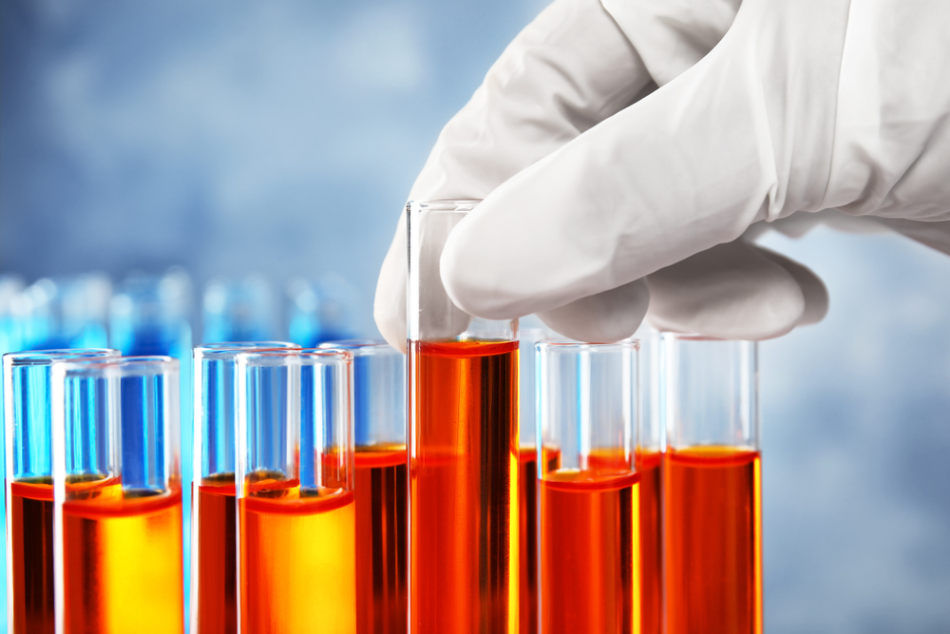
Image Credit: New Africa/Shutterstock.com
The tiny robots are disk-shaped magnets with a diameter of roughly 2 mm, configured to operate together to move and control droplets of blood or other fluids, in an accurate manner. For instance, the robots have the ability to cleave one huge fluid droplet into smaller drops with equal volume for reliable testing.
In addition, using the robots, droplets of fluids can be moved into preloaded testing trays to detect signs of disease. Since these robots are driven by magnetism, they have been named “ferrobots” by the researchers.
It is possible to program the ferrobots to carry out sequential and heavily parallelized fluidic operations at small length scales in a collaborative way. Quite similar to how magnets are used to move metal chess pieces from below a chessboard, electromagnetic tiles within the chip control the motion of the robots by pulling the ferrobots along preferred paths.
We were inspired by the transformational impact of networked mobile robot systems on manufacturing, storage and distribution industries, such as those used to efficiently sort and transport packages at Amazon warehouses.
Sam Emaminejad, Study Senior Corresponding Author and Assistant Professor of Electrical and Computer Engineering, University of California, Los Angeles
Emaminejad continued, “So, we set out to implement the same level of automation and mobility in a microfluidic setting. But our ‘factory floor’ is much smaller, about the size of your palm, and our goods, the fluid droplets, are as small as a few tenths of a millimeter.”
The “factory floor” designed by the team is an index card-sized chip that includes internal structures that help control fluid droplets moved by the robots, as shown in the video below.
A Pipelined and Automated Bioassay Performed by Ferrobots
Video Credit: UCLA
“In the same way that mobile and cross-collaborative Amazon robots transformed the logistics-based industries, our technology could transform various biotech-related industries, including medical diagnostics, drug development, genomics, and the synthesis of chemicals and materials,” stated Dino Di Carlo, study’s co-corresponding and senior author and UCLA’s Armond and Elena Hairapetian Professor in Engineering and Medicine.
These fields have traditionally used refrigerator-sized ‘liquid-handling’ robots. Using our much smaller ferrobots, we have the potential to do a lot more experiments—and generate significantly more data—with the same starting materials and in the same amount of time.
Dino Di Carlo, Armond and Elena Hairapetian Professor in Engineering and Medicine, University of California, Los Angeles
In one of the experiments, the team demonstrated how an automated network of three robots could operate collaboratively to move and control droplets of human plasma samples on a chip while searching for molecular markers signifying the presence of cancer.
We programmed when and where the tiles were switched on and off to guide ferrobots through their designated routes. This allows us to have several robots working in the same space, and at a relatively fast pace to accomplish tasks efficiently.
Wenzhuo Yu, Study Co-Lead Author and Electrical and Computer Engineering Graduate Student, University of California, Los Angeles
During a 24-hour period in the experiments, the robots carried out over 10,000 cyclic motions by traveling at a speed of 10 cm/second. Apart from transportation, other functions like merging, dispensing, and filtering of fluid samples were demonstrated as ferrobots interacted with structures on the chip.
UCLA graduate students Haisong Lin and Yilian Wang, in electrical and computer engineering, and bioengineering, respectively, are the other co-lead authors of the study.
Other authors of the study include Xu He, Nathan Chen, Kevin Sun, Darren Lo, Brian Cheng, Christopher Yeung, and Jiawei Tan, members of either Emaminejad’s or Di Carlo’s research groups at UCLA Samueli. The robots and their chips were developed at the UCLA Nanoelectronics Research Facility. The researchers have filed an application for a patent on the technology.